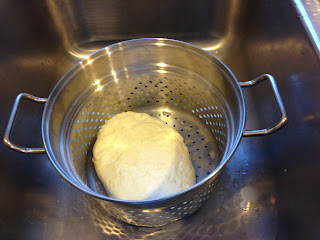Despite having both wings clipped in an effort to keep her safe in the fenced in chicken run, she somehow manages to get out each and every day. She's just so darn friendly, she just has to get out to come say hello.
Well, I've long come to terms with the fact that Miss Buttercup is a loner, a rebel. She does what she wants and goes where she wants whenever she wants! So it comes as no surprise (to me) that she has decided to go broody -- in JANUARY! Yes, it has been verrrrry coooold lately. Today, we are looking at a high of 3 degrees. That's not even counting the wind chill, and boy is it a blow'in. Brrrrr!
Now I've been hoping a hen would want to be a momma ever since I started keeping chickens. I no longer wish to buy chicks or incubate. I've had Barred Rocks, Speckled Sussex and Silkies -- all breeds that were supposed to be broody, but nobody would cooperate! So this last summer I decided to give Buff Orphingtons a try. Guess I finally got the breed right. I just wish Miss Buttercup had gotten the season right!
So now, I have to decide if I should try to break her broody, because it is going to be very difficult for her to keep those eggs and (hopefully) chicks warm. I have no intentions of bringing her into the house. (Been there, done that.) But I've been wanting to do this for soooooo looooong. So, I guess I'm gonna let her try. Who knows, maybe we'll have some chicks on Valentine's Day!












